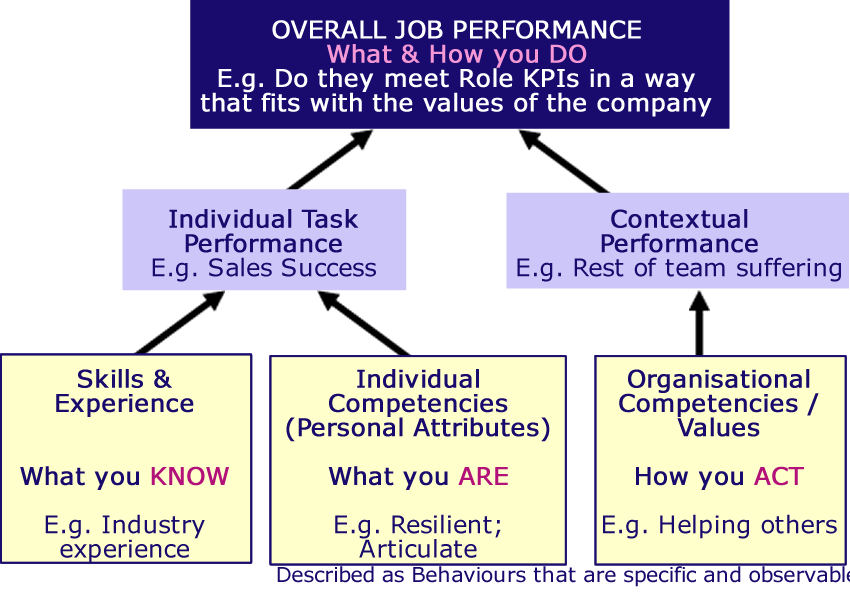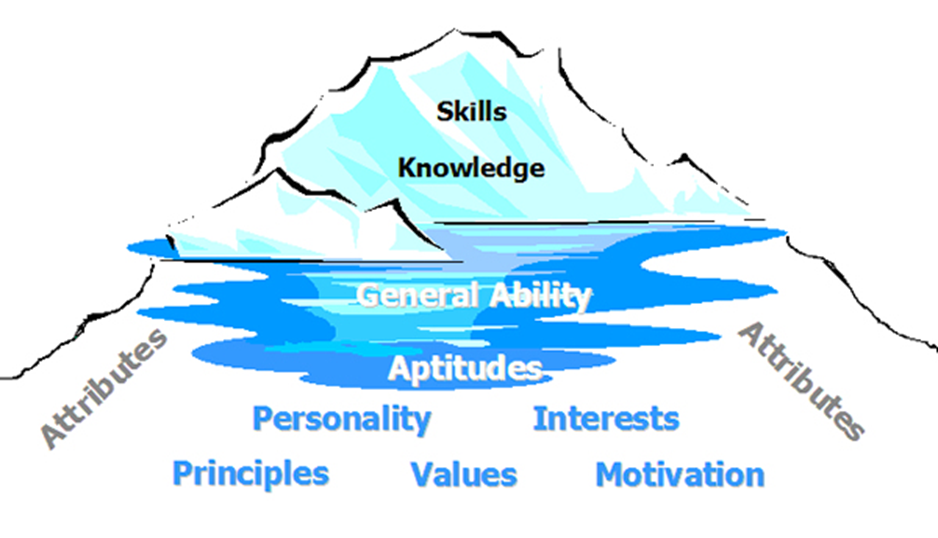Competency Profiling
What are competencies?
Woodruffe (1990) defines “a competency is the set of behaviour patterns that the incumbent needs to bring to a position in order to perform its tasks and functions with competence.”
Rudman (2000) in Human Resources Management in New Zealand explains a competency “seems to include all inputs – both cognitive and behavioural – which a person needs for successful performance outcomes.
Competencies are all about what people do and their behaviours not just their skills and knowledge that they bring to a role.
Observation 1
- While skills and knowledge are necessary for successful job performance they are not sufficient.
- Successful people also need the right personal attributes to succeed and they need to fit with the organisation.
Observation 2
- Most people hire employees on the basis of skills and knowledge (previous experience and qualifications).
- Yet most people fire people or consider them unsuitable because of their personal attributes (e.g. don't get along with others, defensive, argumentative).
Observation 3
- The prime reason behind 85% of turnover is organisational incompatibility.
- We have situations where the employee can do the job, but they just don’t fit in - with the boss, with other employees or with the organisational culture.
Niche Consulting's Competency Approach

In this model of on-the-job performance, you can have someone who may be individually performing, but if their contextual performance is poor then they still may not be seen to be performing well in all areas.
Competency frameworks are now seen as the building blocks for achieving organisational performance through focusing on and reviewing an individual’s capability and potential. Competency profiling helps organisations to:
- Identify the desired behaviours required to be successful in a role
- Identify the contextual performance required to be a good employee
- Have these behaviours described in specific and observable terms

An effective competency framework has applications across a wide range of human resource management and development activities including:
- Best practice Recruitment and Selection processes – Selecting the best people who fit with the role competencies and organisational culture. Interviewing, referee checking and psychometric tests should all link to the competencies for the role. This ensures both fairness and legal defensibility of the recruitment process.
- Training and development – making sure we target development activities to their current and future roles
- Performance management – giving feedback and coaching on the targeted competencies ensures both individual performance and contextual performance are covered
- Retention – by selecting the right people who fit the values, culture and role best, we can improve retention of individuals
- Succession management – making sure we identify talent and develop it for future roles
Niche Consulting has worked with clients to develop their own competency framework and for clients who prefer to use a generic framework, we have our own ready to use model.
We assist clients to define the competencies for a role by doing a competency profiling exercise which is comprised of a “competency card sort”, using the Niche competencies and key client personnel.
Our framework has over 70 competencies in it under the following 9 sub groups. Each competency is defined overall and also has behavioural definitions for up to 4 different complexity levels.
As industrial psychologists we are most interested in improving selection processes in organisations as the right people coming into an organisation have a very strong impact on the organisation’s culture, productivity and success.
The use of competency profiling in selection therefore is one step towards best practice selection and retention. In addition, competencies are very useful when recommending the right psychometric assessment tools to use, and you know what behaviours (cognitive and behavioural) will be most critical to a person’s success in a role within that organisation.
